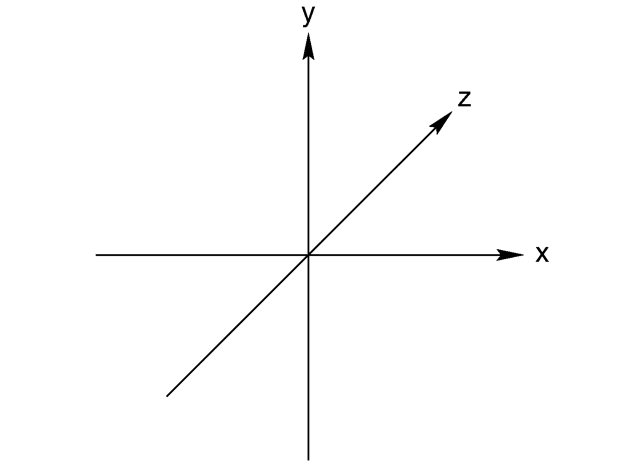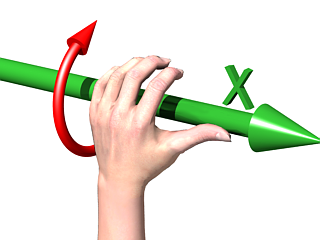1.2.1.1 Understanding POV-Ray's Coordinate System
First, we have to tell POV-Ray where our camera is and where it is looking. To do this, we use 3D coordinates. The
usual coordinate system for POV-Ray has the positive y-axis pointing up, the positive x-axis pointing to the right,
and the positive z-axis pointing into the screen as follows:

This kind of coordinate system is called a left-handed coordinate system. If we use our left hand's fingers we can
easily see why it is called left-handed. We just point our thumb in the direction of the positive x-axis (to the
right), the index finger in the direction of the positive y-axis (straight up) and the middle finger in the positive
z-axis direction (forward). We can only do this with our left hand. If we had used our right hand we would not have
been able to point the middle finger in the correct direction.
The left hand can also be used to determine rotation directions. To do this we must perform the famous "Computer
Graphics Aerobics" exercise. We hold up our left hand and point our thumb in the positive direction of the
axis of rotation. Our fingers will curl in the positive direction of rotation. Similarly if we point our thumb in the
negative direction of the axis our fingers will curl in the negative direction of rotation.

In the above illustration, the left hand is curling around the x-axis. The thumb points in the positive x direction
and the fingers curl over in the positive rotation direction.
If we want to use a right-handed system, as some CAD systems and modelers do, the right
vector in the camera specification needs to be changed. See the detailed description in "Handedness".
In a right-handed system we use our right hand for the "Aerobics".
There is some controversy over whether POV-Ray's method of doing a right-handed system is really proper. To avoid
problems we stick with the left-handed system which is not in dispute.
|






